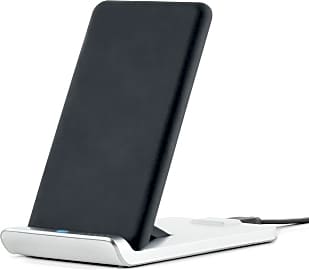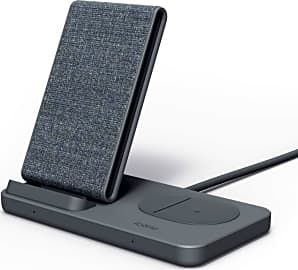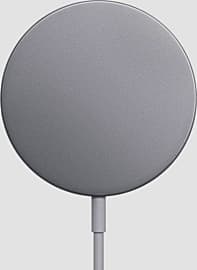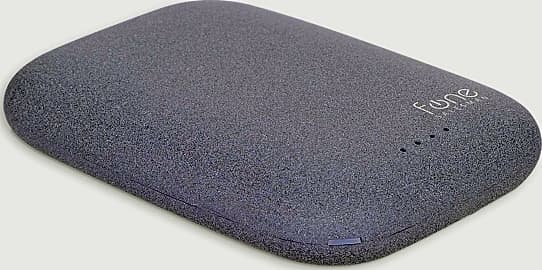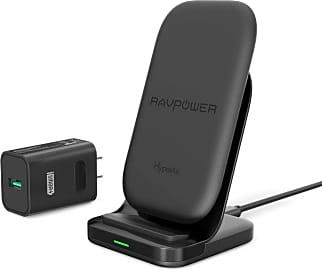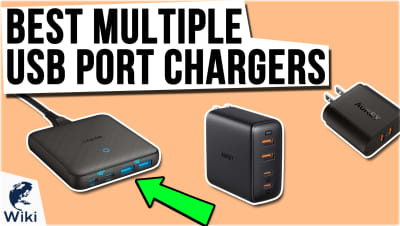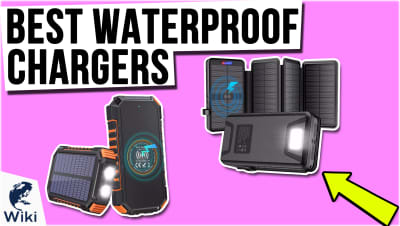The 10 Best Wireless Chargers

This wiki has been updated 40 times since it was first published in March of 2015. In the ever-expanding quest to "cut the cord," we tend to overlook those wires we spend the most time wrangling. Now that the majority of flagship models are Qi-compatible, how about freeing up your smartphone and other mobile devices? Our selection of wireless chargers and charging pads will let you dump all of those bulky adapters and cables while remaining fully powered up. When users buy our independently chosen editorial selections, we may earn commissions to help fund the Wiki.
Editor's Notes
December 24, 2020:
Wireless charging technology is continuously being improved upon and it seems like every year we have models that can get the job done quicker and quicker. Because of this, we replaced nearly every one of our previous recommendations with newer more powerful models. However, we did, at times, make exceptions when it comes to charging speeds for other conveniences. In this case, we are specifically talking about the Fonesalesman QiStone+. While it isn't going to be the fastest to recharge your device, it is both a wireless charger and a portable powerbank, so we still think it is going to be a good choice for many users. It also has a USB port, allowing it to charge two devices simultaneously, one wired and the other wirelessly.
January 05, 2019:
Wireless chargers come in all shapes, sizes and power capacities, and we've crafted this list to the reflect the diversity of options out there. Flat, coaster-like designs like the Samsung EP-PG920 and Belkin Boost Up Bold let you place your phone down at the end of a long day without needing to plug in, while stand designs like the Tylt Vu and RAVPower Fast Charge keep your phone propped up while charging, at such an angle that allows you to view the screen and watch videos. But one of the most important features is charging speed, and the top three models on this list all offer the fastest modes available.
Magnet To Magnet
As the magnets interact, they transfer the current from the charger and into your phone's battery.
Since cell phones have become an integral part of our daily lives, there's been no end to the charging apparatuses we have to buy to keep our devices juiced up. As phones get more and more powerful, the battery life that once lasted days reduces, usually, to less than 24 hours. This complication has also resulted in an enormous increase on the number of daily functions for which we rely on our little supercomputers.
Imagine taking even a short road trip into an unfamiliar part of a city or country with a dying phone in your car and no charger. You could end up, as my mother used to warn, dead in a ditch somewhere. So, instead, we keep a whole army of cables and adapters at our disposal, often collecting them for generations of phones and keeping them long after the market renders them obsolete.
Well, it's time to cut the cord, and wireless chargers are the way to do it. In terms of market saturation, wireless power is about to leave the sphere that Bluetooth occupied a little over a decade ago, when it was used by a few apparatuses with a great deal of success, and by a number of techies who were ahead of the curve, but who looked a little ridiculous relying on it.
Today's wireless chargers are sleeker and more efficient, working with more phones and in more environments than ever before. They use a magnetic form of wireless charging called inductive charging, which requires that your phone be compatible to complete the circuit with an internal magnet of its own, otherwise you're stuck buying yet another adapter for the phone you've got.
Once you've got a phone that's compatible, or Qi enabled, as the industry puts it, all you have to do with any of the chargers on our list is plug it in and set your phone down on it. As the magnets interact, they transfer the current from the charger and into your phone's battery.
Where Do You Plug It In?
A big part of narrowing down our list of the top wireless chargers to the models that would suit you best is asking yourself where you want to use it. There are essentially two kinds of wireless chargers on our list: those meant for the home or office and those meant for the car.
Other positions my require that you find a different charger that will set up in a more comfortable spot in your car.
The models meant for your home or office all look like small Lazy Susans, little platforms that might just as readily house a handful of exotic spices as they might your latest smartphone. The great thing about these is that they bring an element of futurism to your space, even an air of mystery to anyone who doesn't recognize them. The other great benefit of the home platforms is that they can charge more than just your smartphone. Any Qi enabled device that can fit on it will charge.
The other models on our list are all clearly meant for charging your phone while it's in your car. Sure, you might already have a charger for your phone in your car, but if you've nearly died trying to plug it in on the middle of the highway just half as many times as I have, you should immediately see its benefit.
When you leave one of these chargers in your car, it doubles as the mount for your phone, so when you get in to go somewhere, all you have to do is place your phone in the clip and it will charge. The platform itself plugs into your car's power outlet, and it stays there.
Among the car mount chargers, it's worth considering how and where they fasten to a surface in your vehicle. Take a look at your car and try to determine what the most comfortable setup would be. If it looks like you'd need a platform that clamps onto one of your air conditioning vents to achieve the proper position, that's what you should go for. Other positions my require that you find a different charger that will set up in a more comfortable spot in your car.
Power Isn't Free
This all may sound very cutting edge, but wireless electricity is nothing particularly new. Throughout the 19th century, a litany of inventors and scientists experimented with electromagnetism and happened upon a few discoveries that laid the groundwork for inductive charging.
It's still early in the worldwide adoption of wireless charging, but it continues to make inroads into homes and businesses.
Nikola Tesla famously pioneered a number of wireless power methods, demonstrating the ability to illuminate light bulbs from across a stage as early as the first decade of the 20th century. He envisioned a world of free energy in which information and power transmitted worldwide via wireless networks. Of course, something like that would lose a lot of money for a lot of very powerful people, so Tesla's investments suddenly dried up, and the genius died destitute and unfulfilled. Thanks, capitalism!
In more recent years, necessity bred new interest in induction charging, as things like electric shavers and toothbrushes posed a shocking danger to their users should they get wet while charging. By using induction charging, manufacturers of electrical devices designed to charge in watery areas could insulate their charging elements against moisture, protecting their customers and their bottom line.
It's still early in the worldwide adoption of wireless charging, but it continues to make inroads into homes and businesses. It's only a matter of time before Apple does away with their charging port the way the nixed the headphone jack on the iPhone 7, starting a trend that will eventually put a fork in wired anything as an industry.





